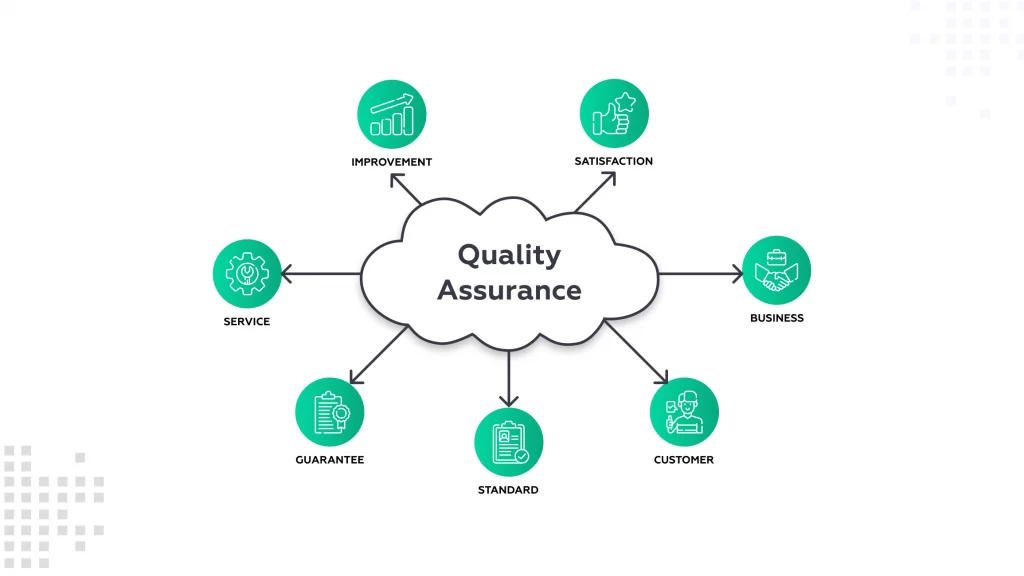It’s essential to validate that the software or mobile application is operating perfectly. Only through a procedure known as quality assurance testing (QA) can that be confirmed. Professional software development companies offer quality assurance testing or software testing services to guarantee that the app or software will function as intended—without any bugs or security issues—so that end customers may safely use it without putting their data at danger.
Software defects are found during quality assurance testing, which also assists the developers in fixing them. When changes are implemented, it should preferably be done before roll out. It can also be done frequently to look for problems that may have accumulated over time. Operators, developers, and testers make up a typical QA team, and they are all charged with ensuring a high-quality final result. They may use automated software testing techniques to make their job easier, especially for repetitive and standard functions. Let’s brief about Quality Assurance testing.
Understanding of Quality Assurance Testing:
The process of ensuring that the product is of the highest quality for the clients is known as quality assurance (QA) testing. Simply put, quality assurance (QA) refers to the methods used to avoid problems with the software product or service and to guarantee a positive user experience for your clients.
Testing for quality assurance involves determining whether a system or one of its components satisfies the standards. Simply said, software quality assurance is the process of carrying out a series of operations to find discrepancies, mistakes, and faults that go against the specifications.
The Importance of Quality Assurance in the Development of Software:
The importance of quality assurance cannot be overstated when it comes to software development. Among the most essential components are:
[Image Source: https://bit.ly/44uIF7u]
QA SAVES TIME AND DRIVES DOWN COST:
One can foresee problems like bugs, flaws, and errors and stop them from ever happening by putting QA processes in place throughout the production life-cycle. Users can save time and money by seeing difficulties early on in the product lifecycle and implementing changes, which will help to avoid spending time and money on those problems later on. Furthermore, any defects or mistakes that do happen despite the QA procedures in place are probably going to be small and simple to rectify.
QA ASSISTS IN MAINTAINING THE PRODUCT’S QUALITY:
Users can keep their product’s dependability and stability by implementing QA methods. QA strives to be proactive by anticipating problems before users arise so that the users are never included in the software build. The QA team collaborates with the quality control team to conduct tests at various phases of the product’s life cycle that concentrate on the usability, functionality, security, and usability of the product. Fewer problems equal greater quality. The ultimate result is that, to the best of the company’s ability, the finished product has few flaws and performs exactly as planned.
QA ENSURES SECURITY OF THE PRODUCT:
Software security is always a top issue, thus it makes natural that a company’s QA procedures should place a lot of emphasis on this subject. Software programmes may function flawlessly, but this does not imply that they are safe. A software’s security flaws could potentially jeopardize a company’s data, which is obviously a huge problem. Before the product is finally examined by the QC team once it is finished, the QA team adds safeguarding mechanisms to ensure that it is created as safely as feasible.
QA RUN PERFORMANCE TESTING:
Performance testing is another benefit you receive when a QA is involved in your project. It is a testing procedure that aids in determining how well a system responds and remains stable under a specific workload. What else? Performance testing allows you to assess, validate, or confirm the system’s other quality characteristics, such as dependability, scalability, and resource utilization. In addition to software that works flawlessly, quality also means that user requests are met promptly.
QA ENHANCES CLIENT’S SATISFACTION:
Customer satisfaction is crucial whether you are developing software for a business or for the end user directly. Customers and clients alike expect a product to meet their needs and have a comprehensive set of features that work well and without any problems. The QA team’s responsibility is to set up procedures to guarantee that their software provides clients with exactly what they want. If they execute this task properly, customer satisfaction will be high and a job well done will be recorded.
Conclusion
Software development can be exceedingly unreliable, leading to unviable products and needing to start from scratch if defects are too pervasive without QA. As a result, any software organization would benefit greatly from having strong “QA driven philosophy” and reliable, efficient quality assurance systems in place. Are you prepared to use trustworthy and high-quality software testing services? Contact us now. We offer quality assurance testing that can raise the caliber of your software, mobile, and web apps.

About Author
Pankaj Sakariya - Delivery Manager
Pankaj is a results-driven professional with a track record of successfully managing high-impact projects. His ability to balance client expectations with operational excellence makes him an invaluable asset. Pankaj is committed to ensuring smooth delivery and exceeding client expectations, with a strong focus on quality and team collaboration.




